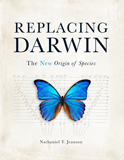Dustup Over Adam
Did God make Adam from dust? The answer is obvious, isn’t it?
You might think some statements
in Scripture are just
too obvious to question their
meaning. “The Lord God formed
the man of dust from the ground and
breathed into his nostrils the breath of
life, and the man became a living creature
”
(Genesis 2:7). It sounds like God
made Adam from the dust, right?
Today, evangelicals who claim that every word of the Bible is inspired are intensely debating the process of Adam’s creation in Genesis 2:7. How can this be?
Clearly, an underlying agenda drives this debate. These scholars are committed to embracing evolution as the way God created the world.
They may give the impression that this is a minor issue, but it has huge implications for how we understand basic doctrines, including salvation itself.
Context of Genesis 2
Proper interpretation begins with
context. Genesis 2 describes a man in
a garden in Eden on Day Six of Creation
Week (see Genesis 2:8, 15), and it
begins the history of the human race.
Genesis 2:5–6 provides the setting for
verse 7. Because “there was no man to
work the ground
” (v. 5), this is the reason
that “the Lord God formed the man
of dust from the ground
” (v. 7).
C. John “Jack” Collins, Old Testament professor at Covenant Theological Seminary, is one of the leading voices in this rethink of Adam’s creation. In Did Adam and Eve Really Exist? he is troublingly unclear on the Genesis account. He allows for the possibility that Adam was merely the head of a tribe rather than the direct ancestor of every human, and he is uncertain how Adam was formed, other than that God’s supernatural intervention is necessary in some way. Further he believes we should not apply “too firm a literalism in relating the words of Genesis 2:7 to a physical and biological account of human origins.”
Collins claims it is of secondary importance where God obtained the raw material for Adam “because either way we are saying that humans are the result of ‘special creation.’” In a previous book, Science and Faith: Friends or Foes? Collins states that he prefers the view that “dust” refers to loose soil, but it could refer to “the body of some ape or hominid.” In Four Views on the Historical Adam, he allows that this could have been a process with intermediate steps, although he implies that he does not hold that position himself: “Each of us is, ultimately, ‘formed of dust,’ even if the dust has gone through a few intermediate (genetic) steps.”
This is a real example of arguments being proposed today. Yet we all know where the proposal comes from, and it’s not Genesis.
Adam is a “special creation.” If there were hominids prior to him, in what sense was Adam the first man?
Even before we look more closely at the passage, we need to recognize the implications of these proposals. If other hominids lived prior to Adam, then what did God do that was special? Collins fails to explain how this is a “special creation” or in what sense Adam was the first man, whose rebellion required the death of the last Adam, Christ, to redeem us (1 Corinthians 15:22, 45).
A Careful Analysis Leaves No Doubts
Careful exegesis of Genesis 2:7 does not allow an intermediate process. Consider the meaning of three key words.
Formed
The Hebrew verb for “formed” (yatsar) often describes the creative activity of a potter (Jeremiah 18:1–4; Isaiah 45:9). In Isaiah 44:9–20, a satire against idols, the craftsman who makes idols “forms” his material with a hammer. Yatsar is also used in Jeremiah 33:2, which says God made, “formed,” and established the world, just as Genesis 1 teaches.
Dust
Adam was made from the dust of the ground, showing that God formed his body supernaturally without intermediate processes. The clincher is that Adam would return to dust (Genesis 3:19). He wouldn’t become an ape or an earlier intermediate! No, Adam would die. And when we die, we return to dust, too (Job 34:15; Psalm 90:3, 104:29; Ecclesiastes 3:20, 12:7; 1 Corinthians 15:47). Death is not a biological necessity but the wage for sin that Adam committed (Romans 6:23).
Ground
The place where God formed Adam was “the ground,” which tells us the source of the dust. Then God breathed into him the breath of life and the lifeless body became a “living creature.” The whole Old Testament adopts this view of human beings: we consist of both the material (dust) and immaterial (breath of life). Not until God breathed into Adam did the first human become alive.
Other details clearly rule out any evolutionary processes: (1) the man is alone (Genesis 2:5, 18), and (2) God breathes into his nostrils the “breath of life.”
The debate over Adam’s supernatural creation is ultimately a debate over whether we trust what the Scriptures clearly teach. Its meaning and implications are clear. If we cannot be certain of such a central teaching at the beginning of Scripture, then how can we be certain about the rest that Scripture teaches?
Related Downloads
Coming to Grips with Genesis Excerpt: Chapter 5
PDF DownloadAnswers Magazine
November–December 2017
Dr. John Whitcomb explains the timeless truths that will help us reach the next generation with God’s message of redemption.
Browse Issue SubscribeRecommended Resources

Answers in Genesis is an apologetics ministry, dedicated to helping Christians defend their faith and proclaim the good news of Jesus Christ.
- Customer Service 800.778.3390
- © 2024 Answers in Genesis




